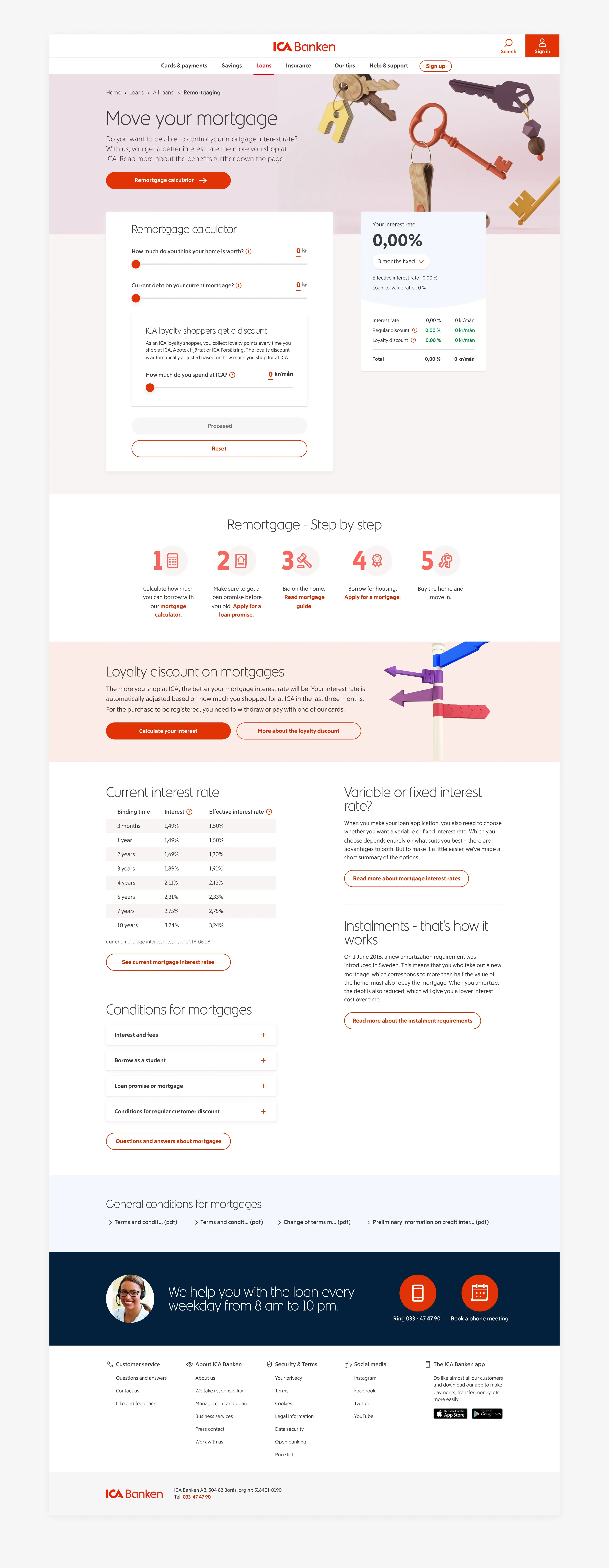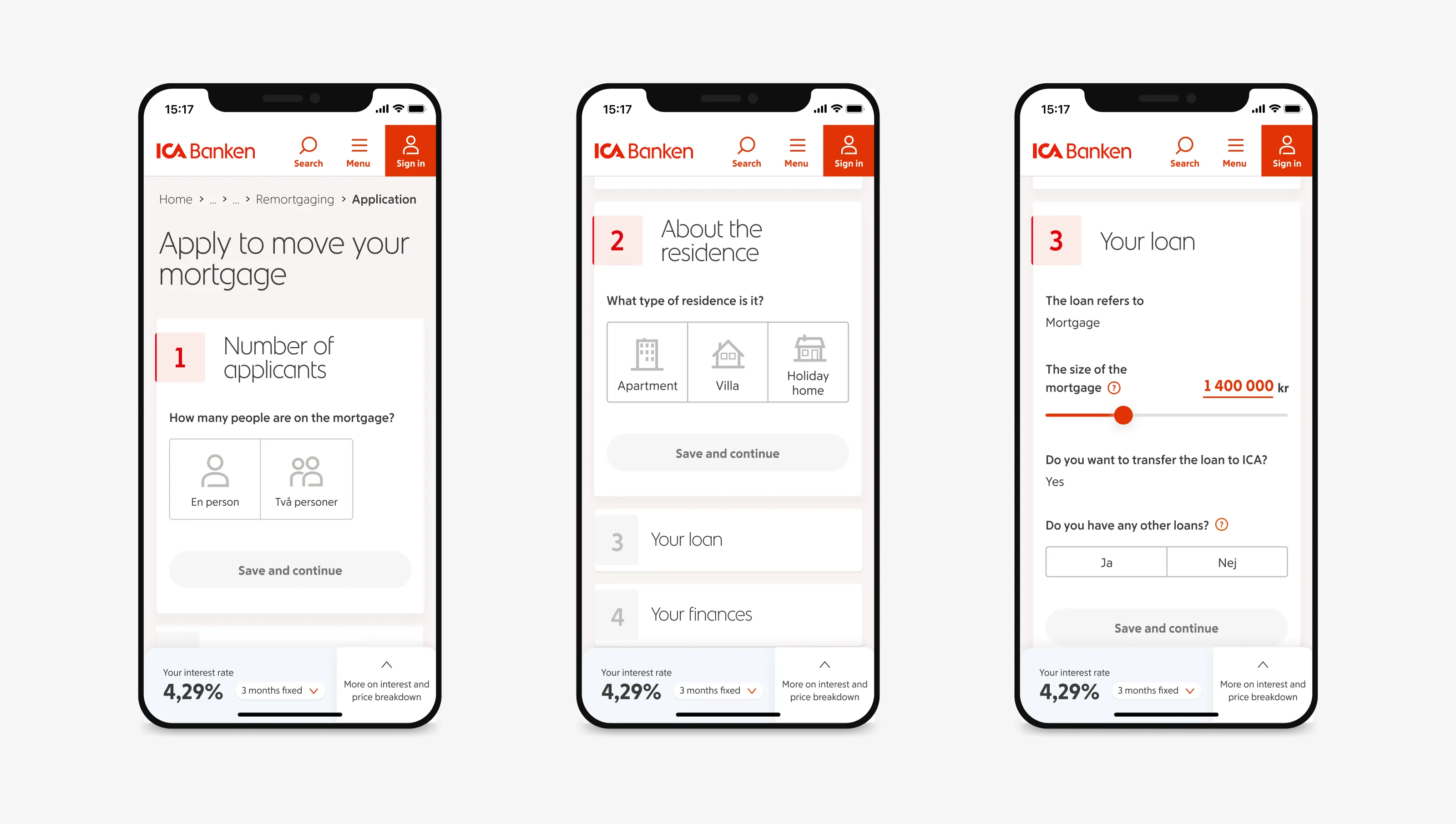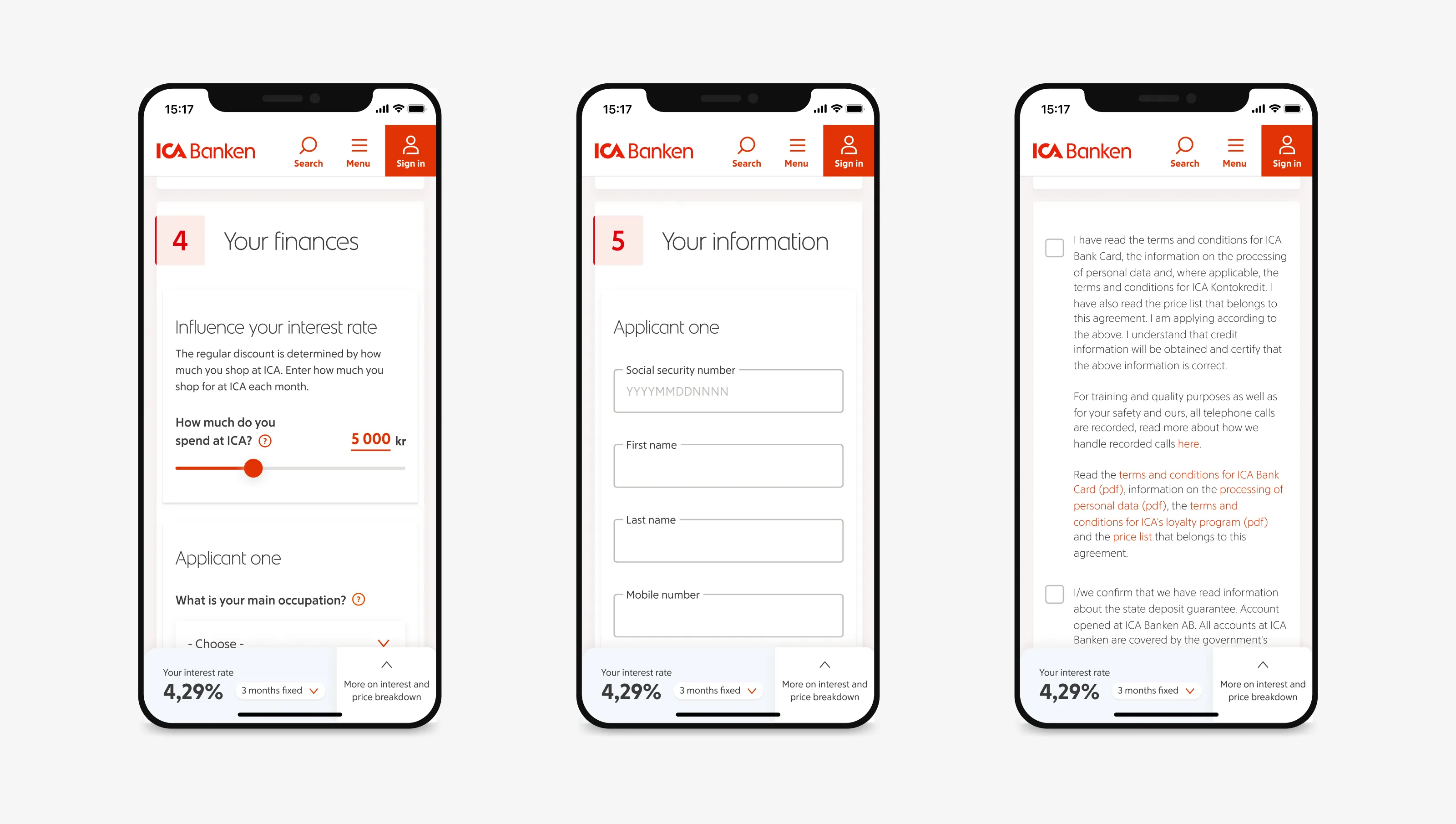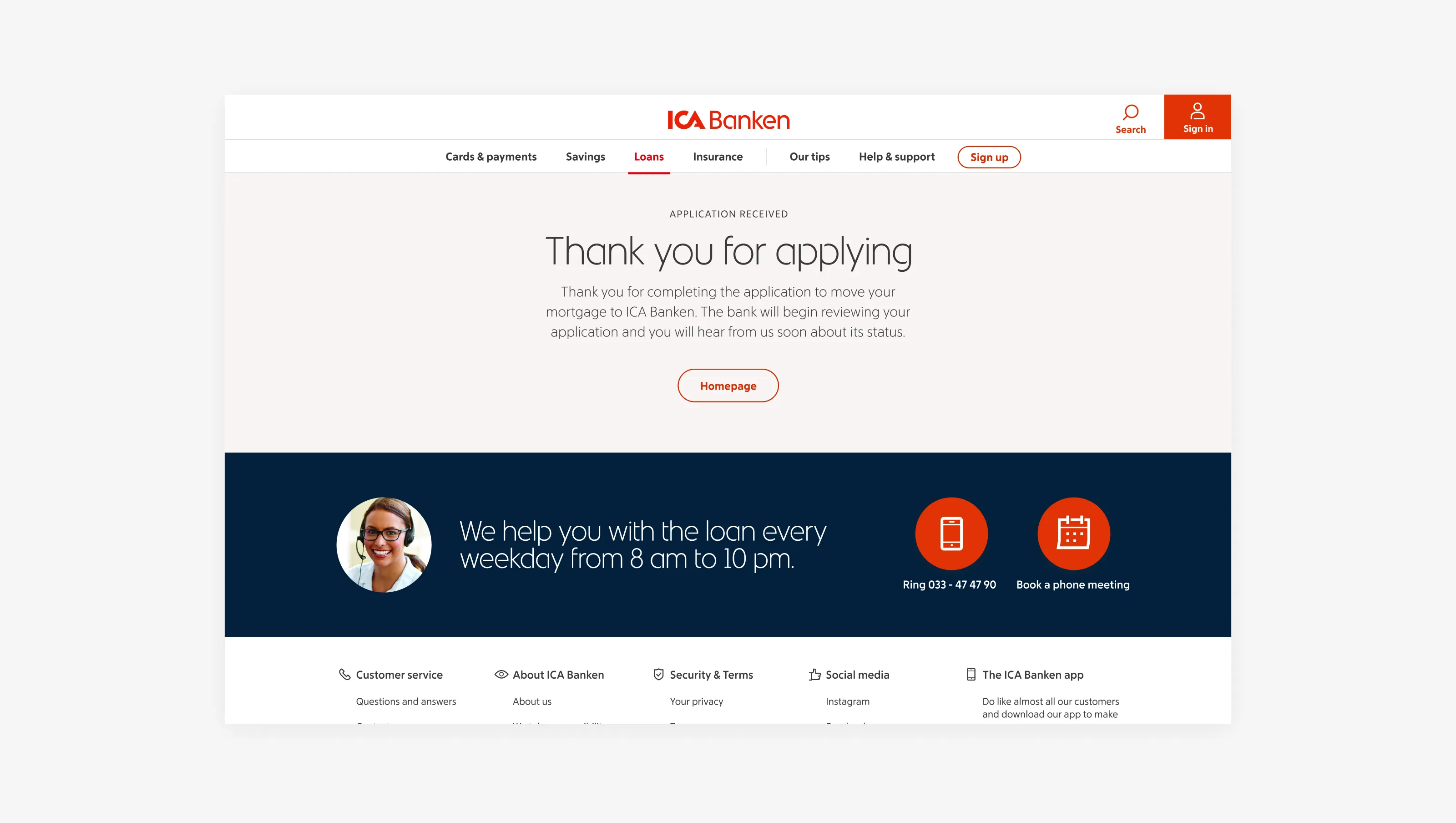Eligibility first
Introduce a brief pre-qualification step (e.g. residency, age, income band, product fit) before the main form. Because early disqualification prevents wasted effort and reduces incomplete applications further downstream.
Front-load expectations
Show a “what you’ll need” checklist (ID, income proof/BankID, time estimate) before users start. Because setting expectations improves perceived control and reduces abandonment caused by surprises.
Short, sequenced steps
Break long forms into logical sections with a persistent progress indicator and “save and resume”. This lowers cognitive load; supports real-life interruptions common in financial applications.
Inline validation and smart defaults
Immediate, field-level validation and masked inputs; reuse previously entered data where possible. This reduces errors and rework, increasing first-time completion.
Clear, layered copy
Rewrite microcopy for clarity and move legal detail into expandable “learn more” sections; keep required consent clear and explicit. This preserves compliance while keeping the core task legible.
Error recovery and support
Specific error messages, preserved inputs on error, and clear recovery paths; contextual help and optional handoff to support. This protects user effort and reduces support contacts.
Design-system-first implementation
Use existing tokens/components and extend only when necessary, documenting new patterns. This speeds delivery, ensures consistency, and lowers maintenance cost.





